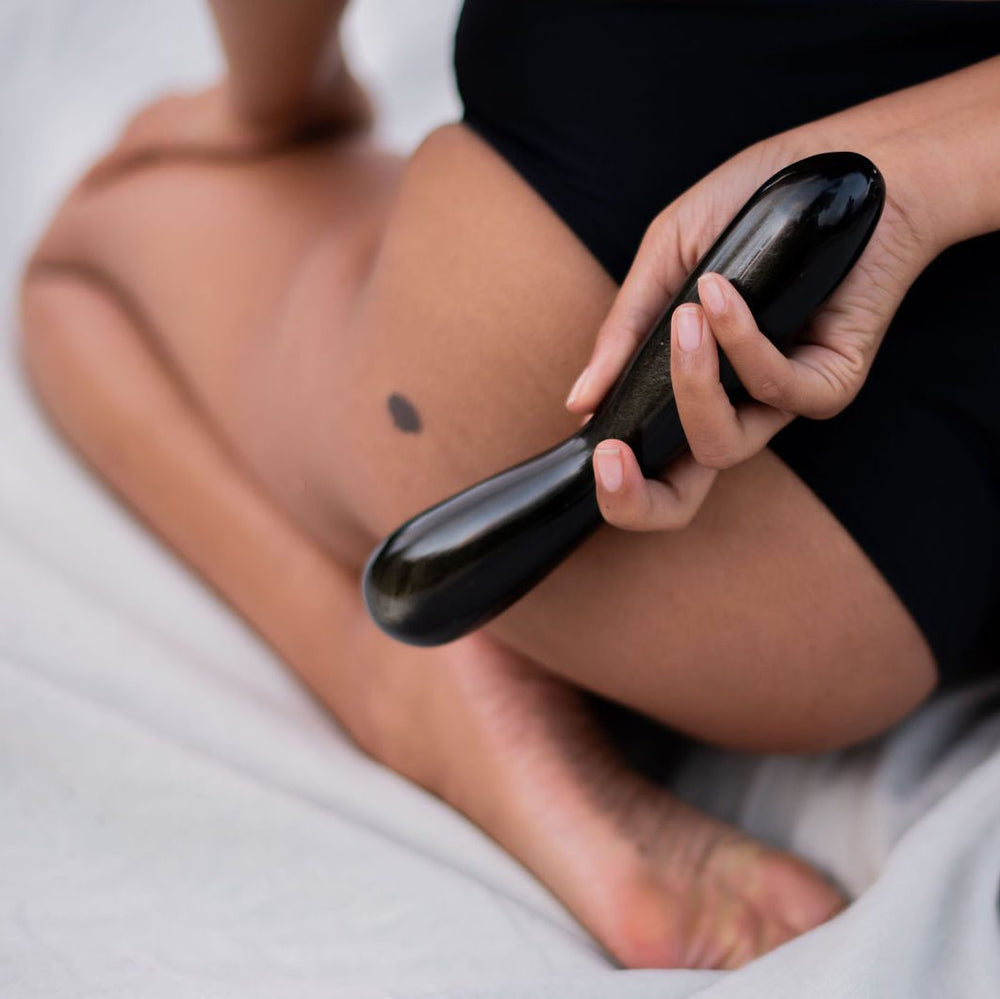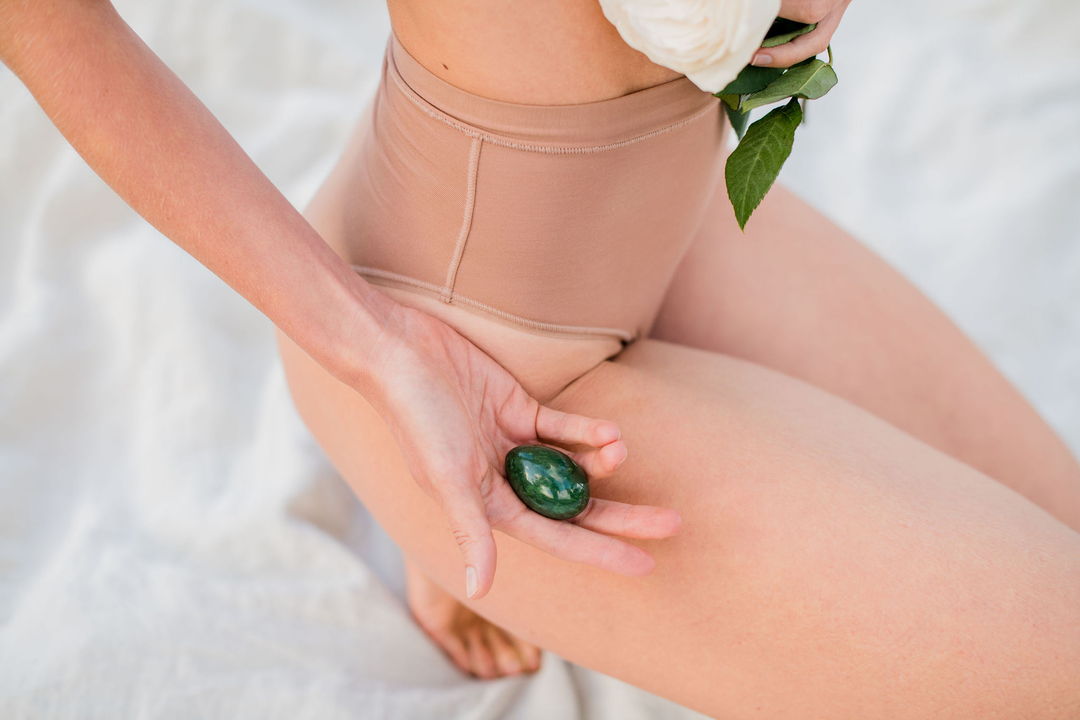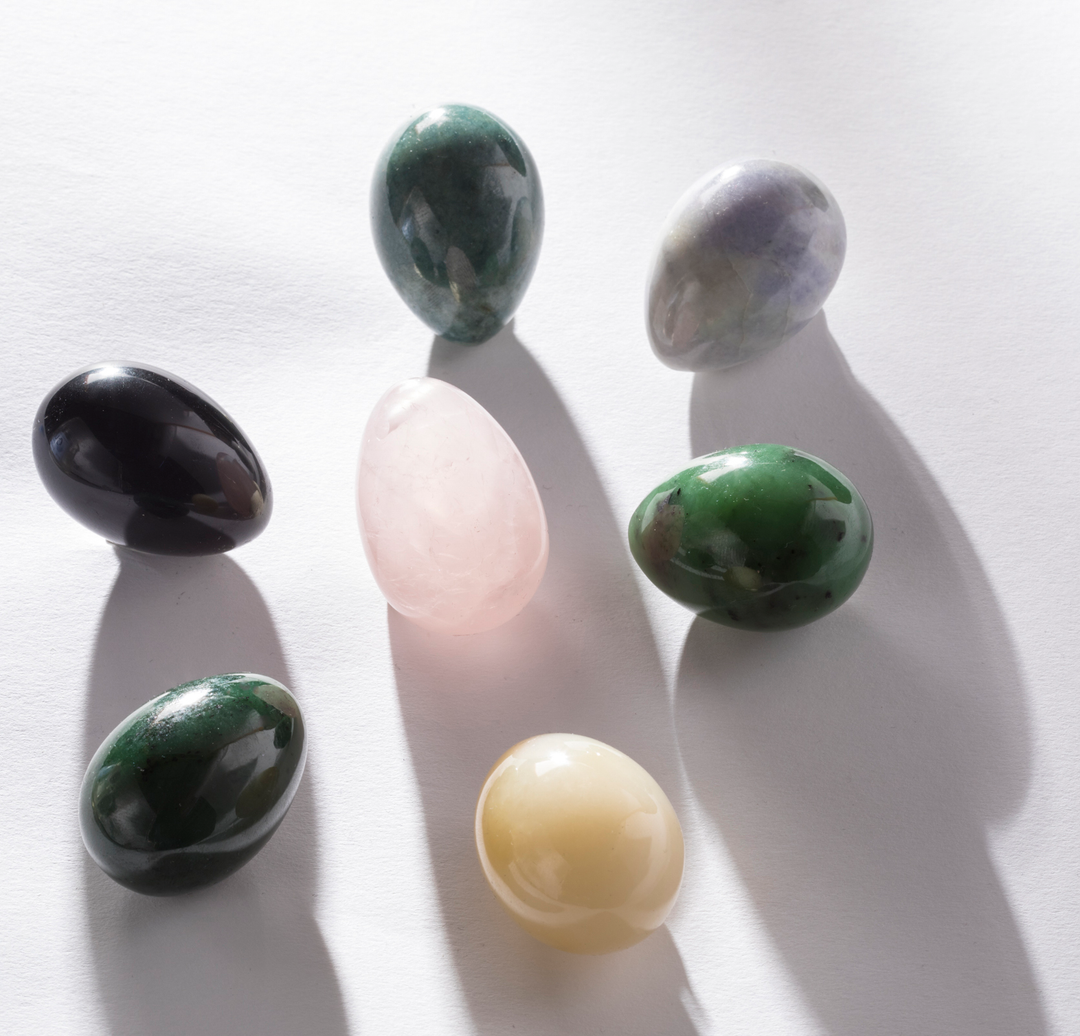Sensual Attraction vs. Sexual Attraction: Key Differences You Need to Know
Table of Contents
Sensual attraction is the desire to be physically close to someone but not necessarily for sex. It’s the craving to touch, cuddle, hold hands, or lie in someone's arms because your body feels safe, soothed, or even lit up just by their closeness.
Sexual attraction, on the other hand, is about wanting erotic engagement. It’s the kind of desire that builds heat in your pelvis, pulls you toward someone with curiosity, hunger, or raw turn-on.
Both forms of attraction can exist together, or completely separately.
This article breaks it down clearly, how these attractions feel in your body, why they get confused, and how to name them so your needs don’t get misread, overridden, or ignored.
Attraction and Romantic Orientation: Understanding the Spectrum
Attraction exists on a spectrum. It’s made up of distinct types, each reflecting a different way you might be drawn to someone. The spectrum is a framework for understanding that emotional interest, physical closeness, sexual desire, mental stimulation, romantic longing, and visual admiration are not the same, and don’t always show up together.
Each type of attraction on the spectrum engages a different part of you. They’re driven by different internal responses, and they fulfill different needs. You might feel one, several, or none in a given situation.
Sexual orientation refers to who you are sexually attracted to. It’s about the people you feel physical desire toward, who you would want to have sex with. It’s focused on sexual interest, arousal, and physical chemistry.
Romantic orientation refers to who you are emotionally attracted to in a romantic sense. It’s about who you want to build a relationship with, share your life with, and form a deeper emotional connection.
You can be sexually attracted to someone without wanting a romantic relationship with them. You can also want a romantic relationship with someone without feeling sexual desire for them. Understanding the difference helps clarify your needs and intentions in any connection.
Types of Attraction
Sexual Attraction
Sexual attraction is a physical response that makes you want sexual contact with someone. It’s not about emotional intimacy or long-term interest but more craving sensation, release, and the chemistry between bodies.
It usually shows up fast. Your brain detects something visually, physically, or sensually appealing. In response, your dopamine system kicks in, the part of the brain linked to motivation, pleasure, and reward. You feel a pull and your thoughts might turn toward sex. This is your body preparing for the possibility of pleasure.
It’s driven by biology, things like scent, voice, skin, proximity, eye contact. It can be unpredictable. You might feel it strongly for someone you don’t even like. Sexual attraction isn’t necessarily a sign of compatibility or emotional safety. It’s a cue that your body is curious about physical contact. It doesn’t always lead to intimacy, and it doesn’t always mean you want to act on it.
Romantic Attraction
Romantic attraction is the desire to build a close, emotionally committed relationship with someone. It’s not just about sex or physical chemistry, it’s about wanting connection, partnership, and shared life.
Biologically, it involves dopamine in the early stages, which creates feelings of excitement, anticipation, and emotional focus. As romantic bonds deepen, the brain releases more endorphins, which support long-term trust, comfort, and emotional stability.
Romantic attraction is often tied to how safe, seen, and emotionally connected you feel with someone. It’s driven by the need for companionship, emotional reciprocity, and being chosen. You want to spend time together, build something, and be part of each other’s lives in a meaningful way.
Aesthetic Attraction
Aesthetic attraction is the experience of noticing and appreciating someone’s appearance without wanting anything from them, no touch, no connection, no interaction. It’s visual.
This attraction is a quick hit of dopamine, triggered by how your brain processes shape, symmetry, color, or movement. It’s rooted in visual appeal, not emotional interest or physical desire.
You recognize beauty, but there’s no urge to get closer or explore anything deeper. It’s observational, not relational. Aesthetic attraction is about seeing, not wanting.
Sensual Attraction
Sensual attraction involves a desire for physical intimacy through acts like cuddling and hugging. It’s about wanting to touch or be touched, like holding hands, cuddling, or lying close, because it feels comforting, safe, or soothing.
Sensual attraction involves the senses, highlighting physical sensations like touch, sight, and smell.
This kind of attraction is driven more by endorphins than dopamine. It calms the body rather than excites it. It’s often linked to nervous system regulation, especially in moments where your body is craving softness, warmth, or physical connection that isn’t sexual. Sensual acts, such as kissing, cuddling, and hugging, play a significant role in fulfilling this type of attraction.
Emotional Attraction
Emotional attraction is about being drawn to someone’s emotional presence and inner world. It’s the connection you feel when you trust someone, resonate with their character, and feel emotionally safe in their presence. This is often the type of attraction that occurs in close friendships or between siblings.
This attraction is supported by oxytocin and serotonin, chemicals that strengthen bonds, regulate mood, and foster emotional security. It often builds over time through consistent vulnerability, honesty, and emotional availability.
Emotional attraction is relational. You feel understood, supported, and connected, not because of physical touch or romantic gestures, but because you feel seen in a way that matters to you.
Intellectual Attraction
Intellectual attraction is the desire to engage with someone’s thoughts, ideas, and perspective. It’s about mental stimulation, not emotional intimacy or physical chemistry. This type of attraction usually occurs in work based relationships and creative partnerships. You see value in the mind of another and what they can create, do, or contribute.
This type of attraction is dopamine-based, it’s your brain responding to novelty, challenge, or insight. It often shows up during deep conversations, debates, or shared curiosity.
You’re not drawn to the person physically or emotionally, you’re drawn to how they think, what they say, and how they process the world. Intellectual attraction can stand alone or become a bridge to other forms of connection, but on its own, it’s purely mental engagement.
Sensual vs. Sexual: Understanding the Differences
| Sensual Attraction | Sexual Attraction |
|---|---|
| Desire to be close, cuddle, or touch without wanting sex | Desire for sexual touch, stimulation, or intercourse |
| Closeness for comfort, relaxation, or bonding | Touch with the intent to arouse or escalate |
| Feels soothing, grounding, emotionally safe | Feels energizing, intense, physically charged |
| Driven by endorphins and oxytocin | Driven by dopamine and sexual arousal hormones |
| Calm, present, emotionally open mental state | Focused, fantasizing, or anticipating mental state |
| Physical sensations are soft, warm, and steady | Physical sensations are tense, heated, and urgent |
| Usually stays non-sexual | Often leads to sexual activity or release |
| Can exist in platonic, romantic, or emotionally intimate dynamics | Typically occurs in romantic or sexual contexts |
| Focus is on emotional connection and physical presence | Focus is on physical desire and erotic connection |
When Sensual Attraction Is Present Without Sexual Desire
Sensual attraction without sexual desire means you want physical closeness, without wanting it to lead to sex. The nature of sensual attraction can be influenced by emotional and physical aspects, making it more about intimacy and affection rather than straightforward sexual interest. You want to hug, cuddle, lie next to someone, or hold them, not because you’re turned on, but because it feels comforting, safe, and emotionally supportive.
This kind of attraction shows up in everyday relationships. A parent holding their child is a strong example of sensual attraction, the body craves closeness, but there’s nothing sexual about it. It also shows up between close friends, siblings, and even in romantic relationships during moments when connection and comfort are needed more than intimacy or arousal. Examples of such relationships include friends who enjoy cuddling during a movie or siblings who find comfort in hugging each other during tough times.
In a relationship, this might look like wanting to be held after a long day or falling asleep in someone’s arms, not because you’re avoiding sex, but because your body is asking for tenderness, not stimulation.
When Sexual Attraction Exists Without Intimacy
Sexual attraction without intimacy means there’s a desire for sex, but not for closeness, affection, or emotional connection. The physical chemistry is there, but the emotional or nurturing side of touch is absent. This highlights that sexual attraction can exist independently of romantic or sensual connections, making it a distinct type of relationship—a sexual one.
This often shows up in casual situations like one-night stands or hookups, where the focus is on physical release rather than bonding. It can also happen in longer-term relationships where sexual connection is present, but non-sexual touch and emotional presence are limited.
Different types of desires, such as physical, emotional, and intellectual, can influence the dynamics of relationships. Recognizing these complexities is important to foster deeper connections, even in the absence of sexual attraction.
In these dynamics, sex may be frequent or satisfying on a physical level, but something still feels missing. Without sensual or emotional intimacy, it’s easy to feel disconnected, even when the desire is mutual.
Sensual Intimacy With Self vs With Others
Sensual intimacy with others is the experience of being physically close in a way that regulates your nervous system, not for sex, but for softening. It's the way your body exhales when you're spooned after a long day. The grounding that comes from resting your head on someone’s chest and hearing their heartbeat slow.
This kind of touch is not about arousal, it’s about access. Access to comfort, emotional presence, and safety. For many women, especially those raised to perform rather than receive, non-sexual touch can be the only place the body finally lets go.
Sensual intimacy with yourself means giving your own body that same experience of presence, without needing a partner to trigger it. It’s meeting yourself in sensation, not for productivity or preparation, but for being.
Most of us were taught to outsource softness. That affection, warmth, or stillness had to be earned from someone else. But when you learn to create those moments with yourself, you begin to notice what kind of touch helps your body soften.
This becomes the foundation for every intimate relationship you’ll ever have, because you’re no longer just reacting to someone else’s closeness. You’re already in relationship with yourself. You already know how to stay present, how to soothe, how to listen.
Practical Tips for Embracing Your Sensual Side
Create a Sensual Space
Your nervous system is reading every detail of your environment. And if what it sees is noise, clutter, coldness, or overstimulation, it won’t unlock. It won’t soften. No matter how much you want it to.
Sensuality isn’t something you switch on with willpower, it’s a physical state, your body has to be coaxed into it.
If your space makes you brace, fix that first. Ditch anything that digs, pokes, scratches, or overstimulates.
Incorporate Sensual Rituals
If your body never receives slow, caring touch, it won’t register it is safe. And if it doesn’t register safety, it can’t relax into pleasure, sensual or sexual.
Engaging in sensual rituals rewire your nervous system. For many women, especially those conditioned to serve others first, the body becomes a place of obligation. Sensual rituals interrupt that and remind your body it’s a source of sensation, pleasure, and presence.
When you take the time to move slowly, to notice how your skin responds, to choose comfort over control, you’re teaching your body that it’s safe to soften.
Explore Your Touch Preferences
If you don’t know how your body likes to be touched, you’ll keep settling for what doesn’t quite feel right.
Describing how your body responds to different sensations is how you learn the difference between what you think you should want and what your body actually enjoys.
Try yoni mapping, a practice of slowly, consciously exploring the layers of your vulva and vagina.
Crystal pleasure wands also support this process beautifully. Unlike vibrators, which often override sensation with intensity, wands invite you to slow down and feel more. They help you access subtle responses, gently awaken numb zones, and identify what kind of internal stimulation actually feels nourishing.
Conclusion
Feeling real, embodied sensual attraction can be just as powerful, and just as thrilling, as sexual or romantic attraction. It anchors you in your body, brings you into the present, and offers connection without pressure. It reminds you that touch doesn’t have to lead anywhere to be worth having.
Start by creating more moments where your body feels met, by your own hands, your own space, your own rhythm. And the more you practice sensual intimacy with yourself, the more clearly you’ll know what kind of intimacy actually supports you, and you’ll start making decisions from a place of embodied clarity.
















Leave a comment